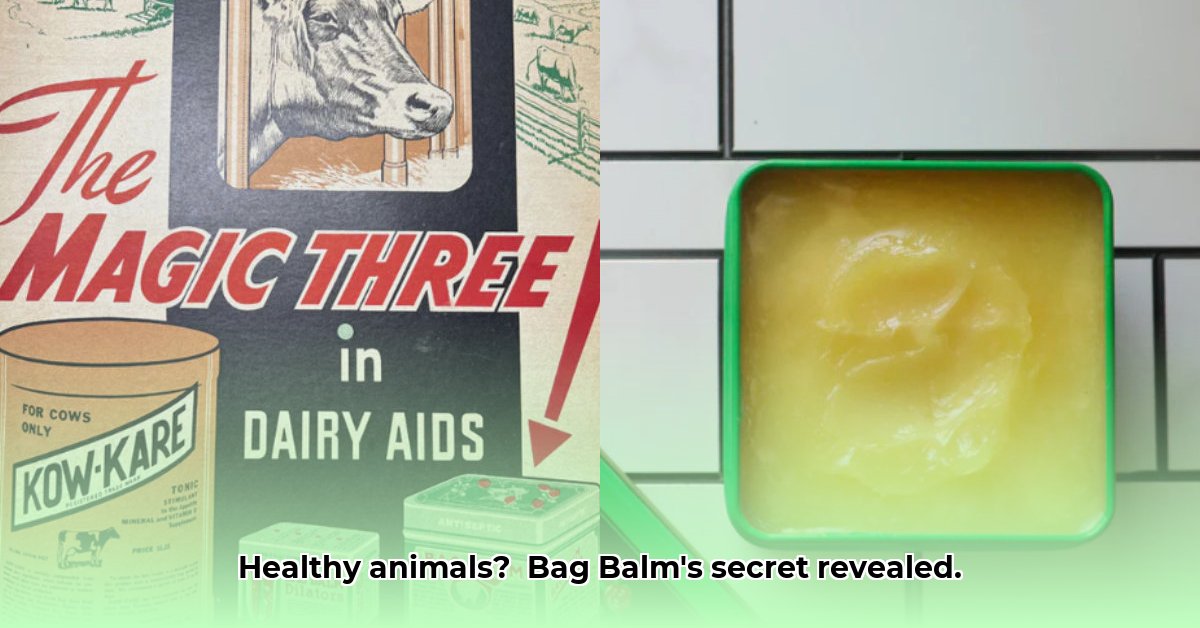
Understanding Tractor Supply Bag Balm and its Role in Sustainable Agriculture
Tractor Supply's Bag Balm is a versatile product with surprising relevance to modern sustainable farming practices. Its primary components—lanolin (a natural wax from sheep's wool), petrolatum (a refined petroleum jelly), and other soothing ingredients—offer a surprisingly effective solution for various animal care needs. But how does this translate to sustainability? By proactively maintaining animal health, Bag Balm can reduce the need for more intensive (and potentially less environmentally friendly) veterinary interventions, such as frequent antibiotic treatments or extensive wound care. This lessened reliance on chemical interventions contributes to a smaller environmental footprint. Furthermore, Bag Balm's long-lasting nature reduces packaging waste compared to products requiring more frequent replacement. While the petrolatum component has environmental considerations, the overall efficient use offsets this to a degree. Ongoing research into more sustainable alternatives to petrolatum is also underway, offering potential improvements in the future. For additional animal health resources, check out supplement options.
Practical Applications of Tractor Supply Bag Balm on Your Sustainable Farm
Bag Balm's uses extend beyond treating sore udders. Its multi-purpose nature can enhance your farm's sustainability in several significant ways.
1. Soothing Chapped Teats on Dairy Cows: A Happy Cow is a Productive Cow
Maintaining healthy dairy cows is crucial for a successful and sustainable operation. Chapped or cracked teats cause discomfort and increase the risk of infection, negatively impacting milk production. Bag Balm offers a simple solution:
Step 1: Cleanse: Gently clean the affected area with lukewarm water and a soft cloth.
Step 2: Apply: Apply a small amount of Bag Balm directly to the chapped teat and gently massage for even coverage.
Step 3: Repeat: Repeat two to three times daily, or as needed, particularly after milking.
Step 4: Monitor: Observe for improvement. Contact your veterinarian if the condition worsens. Regular use can prevent severe issues, promoting animal welfare and reducing potential veterinary costs – a significant factor in sustainable farming.
2. Protecting Animal Hooves: Preventing Lameness, Promoting Wellbeing
Healthy hooves are essential for animal mobility and overall well-being. Exposure to harsh weather and terrain can lead to cracks and dryness. Bag Balm provides a protective barrier:
Step 1: Clean: Thoroughly clean the hooves, removing dirt and debris.
Step 2: Apply: Apply a thin, even layer of Bag Balm to the entire hoof, focusing on cracks or dry areas.
Step 3: Regular Application: Repeat regularly, especially during periods of wet or harsh weather. Proactive hoof care contributes to animal comfort, prevents lameness, and reduces veterinary interventions—all contributing to a more sustainable operation.
3. Conditioning Leather Equipment: Extending the Life of Your Gear
Leather equipment represents a substantial investment. Regular conditioning with Bag Balm keeps it supple, prevents cracking, and extends its lifespan, reducing the need for replacements and minimizing waste:
Step 1: Clean: Gently clean the leather with a damp cloth.
Step 2: Condition: Apply a small amount of Bag Balm, rubbing it in gently. Let it absorb for several hours before buffing to a shine.
Step 3: Store: Store in a cool, dry location. This contributes to longer equipment life, cutting down on resource consumption and waste.
4. First Aid for Minor Cuts and Abrasions: A Quick Fix for Small Injuries
Bag Balm's soothing properties can aid in treating minor cuts and scrapes. It creates a protective barrier, helping prevent infection and promoting faster healing:
Step 1: Clean the Wound: Carefully clean the wound with warm water and a mild antiseptic.
Step 2: Apply Bag Balm: Apply a small amount of Bag Balm to the injured area.
Step 3: Monitor: Monitor closely for signs of infection. For deeper wounds, consult a veterinarian immediately.
Safety and Storage: Best Practices for Responsible Use
While Bag Balm is generally safe, precautions are necessary:
- Store: Keep in a cool, dry location, away from direct sunlight.
- Keep out of reach: Keep out of reach of children and animals.
- Avoid eye contact: Rinse thoroughly with water if contact occurs.
- Reactions: Discontinue use and consult a healthcare professional if irritation occurs.
Sustainability Considerations and Potential Alternatives
While Bag Balm offers numerous benefits, its petrolatum component merits consideration. Explore natural, lanolin-based alternatives featuring beeswax and essential oils for a potentially more environmentally friendly approach. Many sustainable alternatives exist, showcasing the ongoing evolution of sustainable farming practices. Remember, responsible farming involves continuous learning, adapting methods based on experience and new findings. No single product offers a perfect solution; a variety of small, considered choices form a truly sustainable agricultural operation.